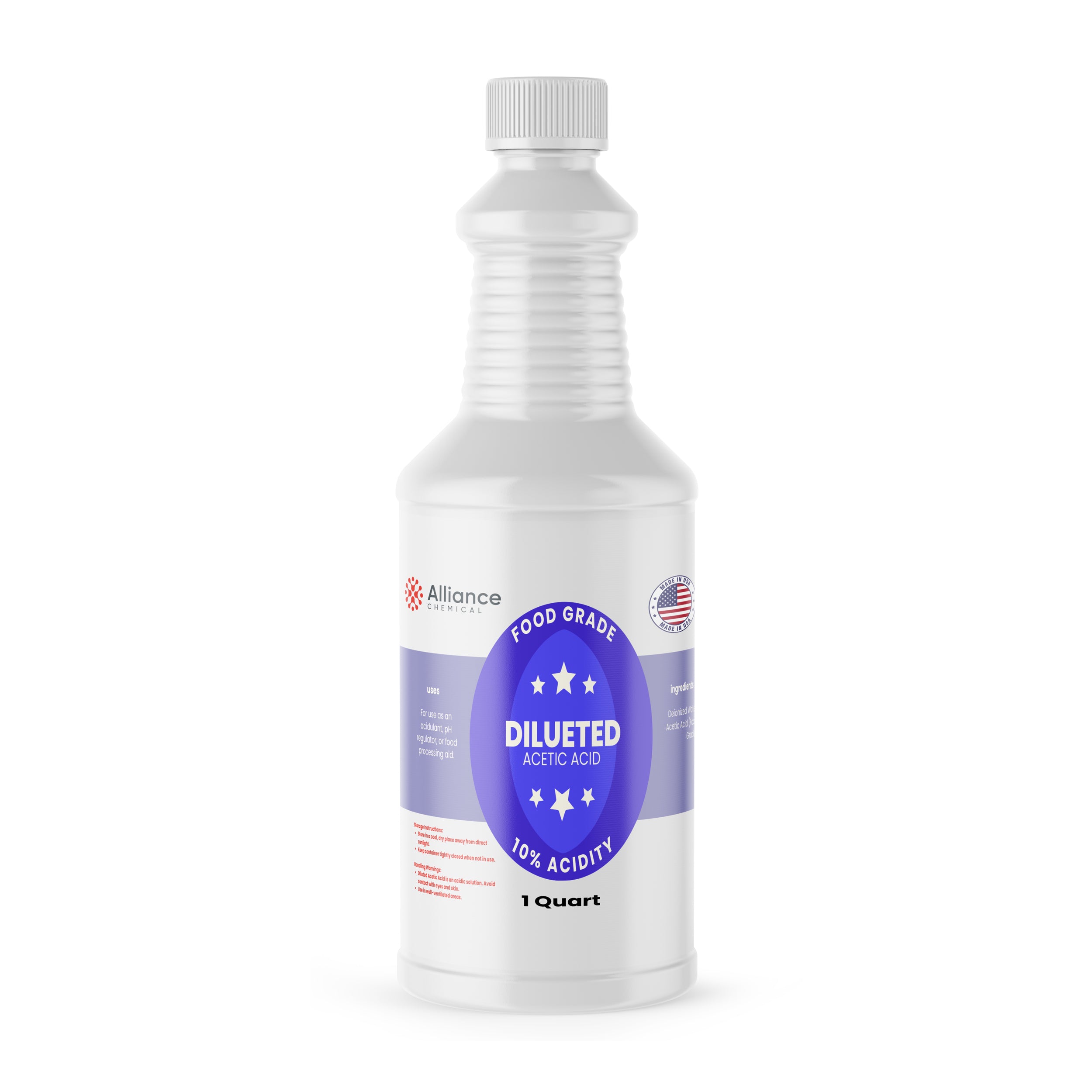Ask a question
Product Overview
10% Diluted Acetic Acid Food Grade is a high-purity, clear, colorless aqueous solution containing 10% acetic acid (CH3COOH) by weight. Commonly known as Ethanoic Acid or Vinegar Acid, this weak organic acid is formulated to meet strict food-grade specifications. It is a critical reagent for industrial food processing, providing precise acidity control without the handling hazards associated with glacial concentrations.
This solution serves as a versatile process aid in commercial environments. It is widely used for pH regulation in beverage production, as a preservative in pickling operations, and for descaling or surface preparation in food manufacturing facilities. Our 10% formulation ensures batch-to-batch consistency, low impurity profiles, and compliance with rigorous industry standards for heavy metals and residues.
Key Properties
- Chemical Formula: CH3COOH (in water)
- Appearance: Clear, colorless liquid
- Odor: Pungent, vinegar-like odor
- Specific Gravity: ~1.01 at 25°C
- Solubility: Miscible with water
- Sulfates (SO₄²⁻): ≤ 100 ppm
- Nitrates (NO₃⁻): ≤ 20 ppm
- Chlorides (Cl⁻): ≤ 50 ppm
- Heavy Metals (as Pb): ≤ 0.5 ppm
- Iron (Fe): ≤ 0.5 ppm
- Residue After Ignition: ≤ 0.05%
Common Applications
- pH Control: Used to adjust acidity levels in large-scale food processing, sauces, and dressings to ensure product stability.
- Food Preservation: Acts as a preservative agent in pickling and brining processes to maintain product integrity.
- Manufacturing: Utilized in the production of acetates and as a reaction intermediate in chemical synthesis.
- Equipment Maintenance: Effective for mineral deposit removal and descaling of industrial food-contact machinery.
- Textile & Dyeing: Used in acidifying dye baths and neutralizing alkaline residues in fabric processing.
Safety & Handling
While 10% Acetic Acid is less hazardous than glacial concentrations, standard industrial safety practices must be followed. Store in high-density polyethylene (HDPE) containers in a cool, well-ventilated area. Avoid contact with strong oxidizers and bases.
PPE Requirements: Personnel should wear chemical-resistant gloves, safety goggles, and protective aprons during handling to prevent skin and eye irritation. In the event of a spill, contain the liquid with inert absorbent material and dispose of in accordance with local, state, and federal regulations. Refer to the Safety Data Sheet (SDS) for detailed emergency response protocols.
Benefits
Food-Grade Purity – Manufactured to meet strict specifications for low heavy metals and impurities.
Ready-to-Use Concentration – Pre-diluted to 10% for immediate application, eliminating the need for hazardous on-site mixing.
Versatile Packaging – Available in sizes ranging from 1 Quart bottles to 330 Gallon totes to suit any operation scale.
Reliable Supply Chain – Consistent sourcing and quality assurance for manufacturing continuity.
Related Products
| Property | Value |
|---|---|
| Molecular Weight | 60.05 g/mol |
| Formula | CH3COOH |
| Flash Point | 39 |
| Form | Liquid |
| Solubility | Complete water miscibility |
| Appearance | Clear, colorless liquid with mild vinegar odor |
| Melting Point | 16 °C |
| Boiling Point | 118 °C |
A7G-3XK-Q9P
$22.00
Unit price
Compare Products
| Price |
|---|
| SKU |
| Rating |
| Discount |
| Vendor |
| Tags |
| Weight |
| Stock |
| Short Description |

















